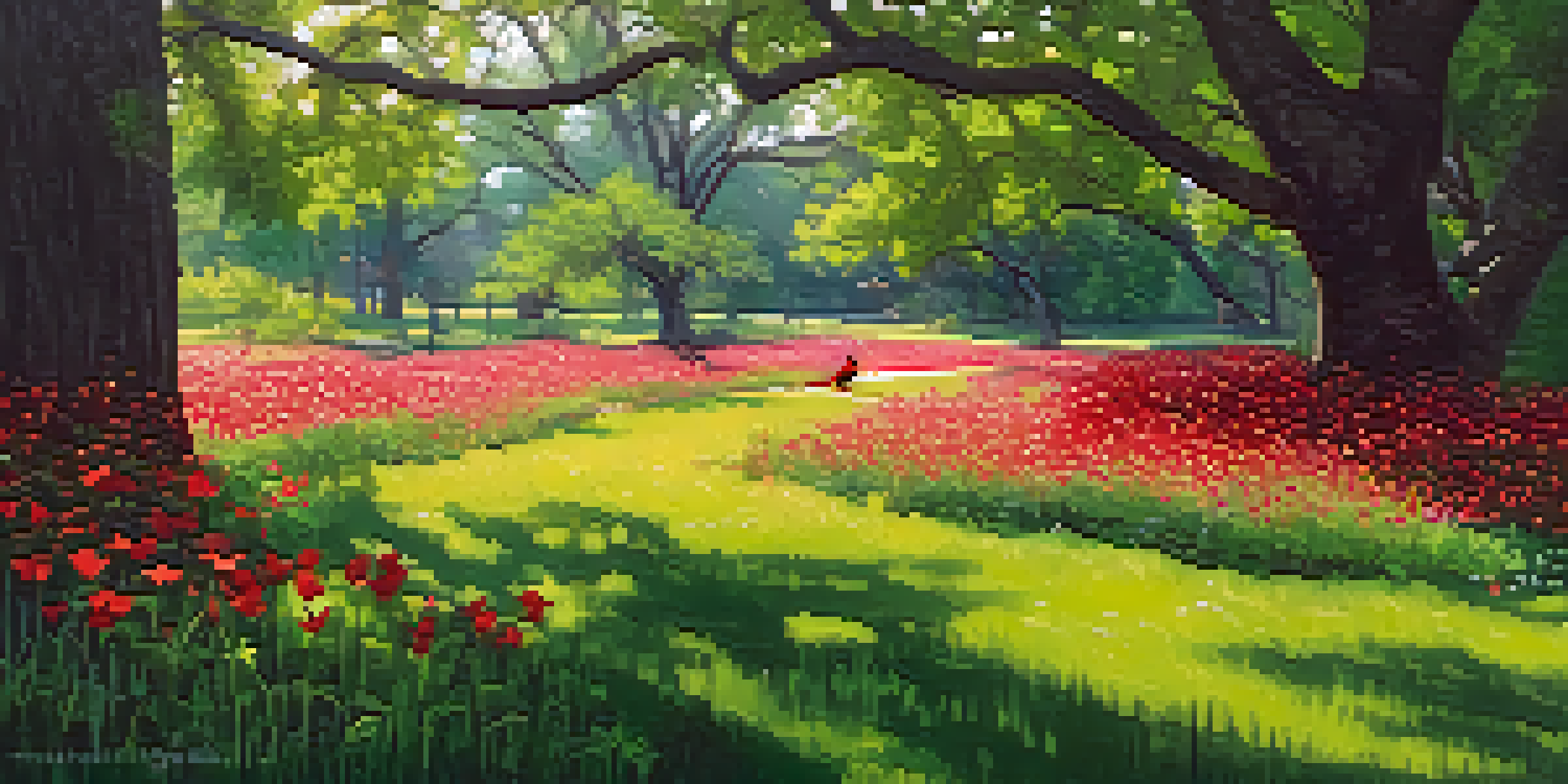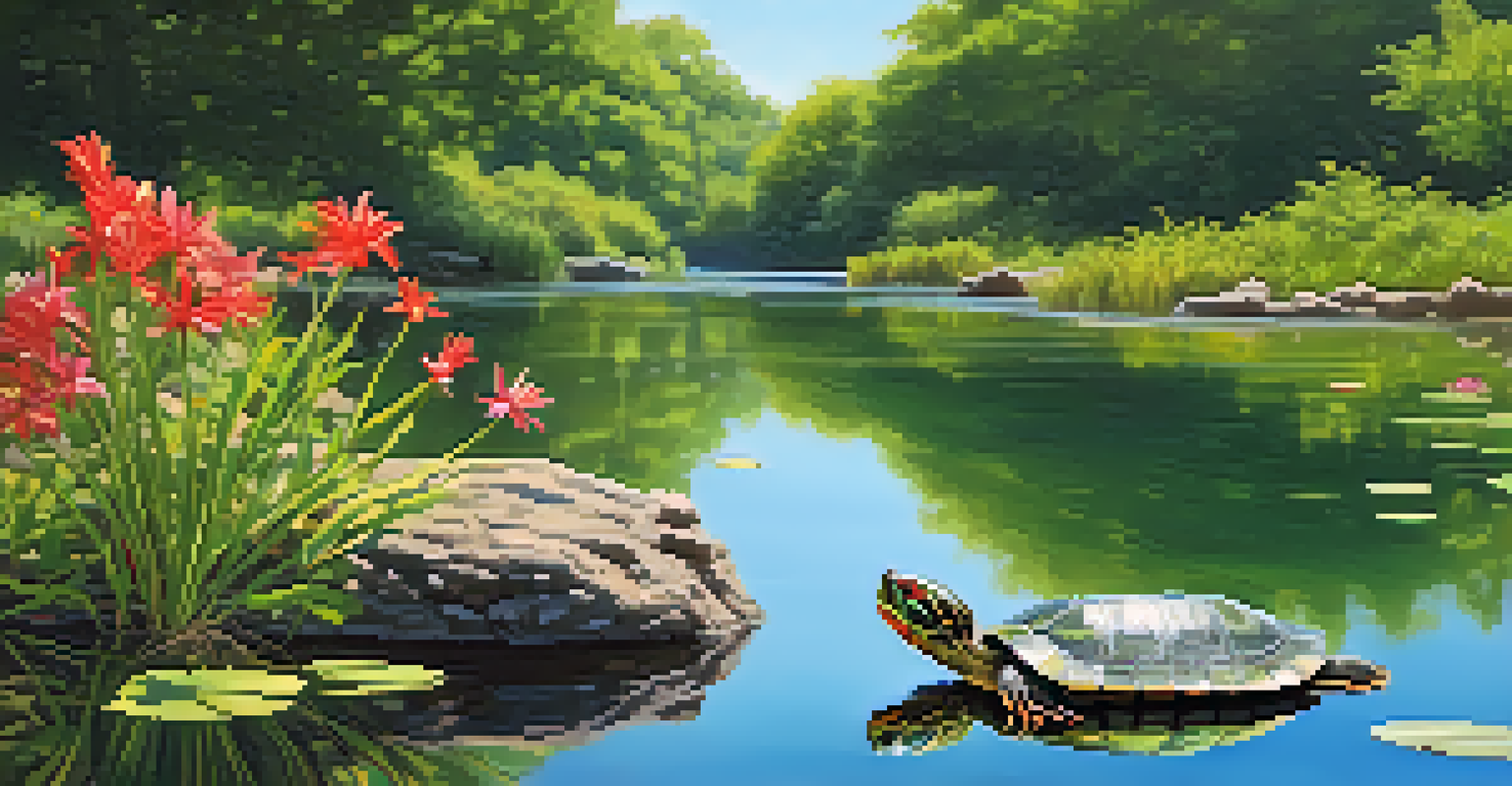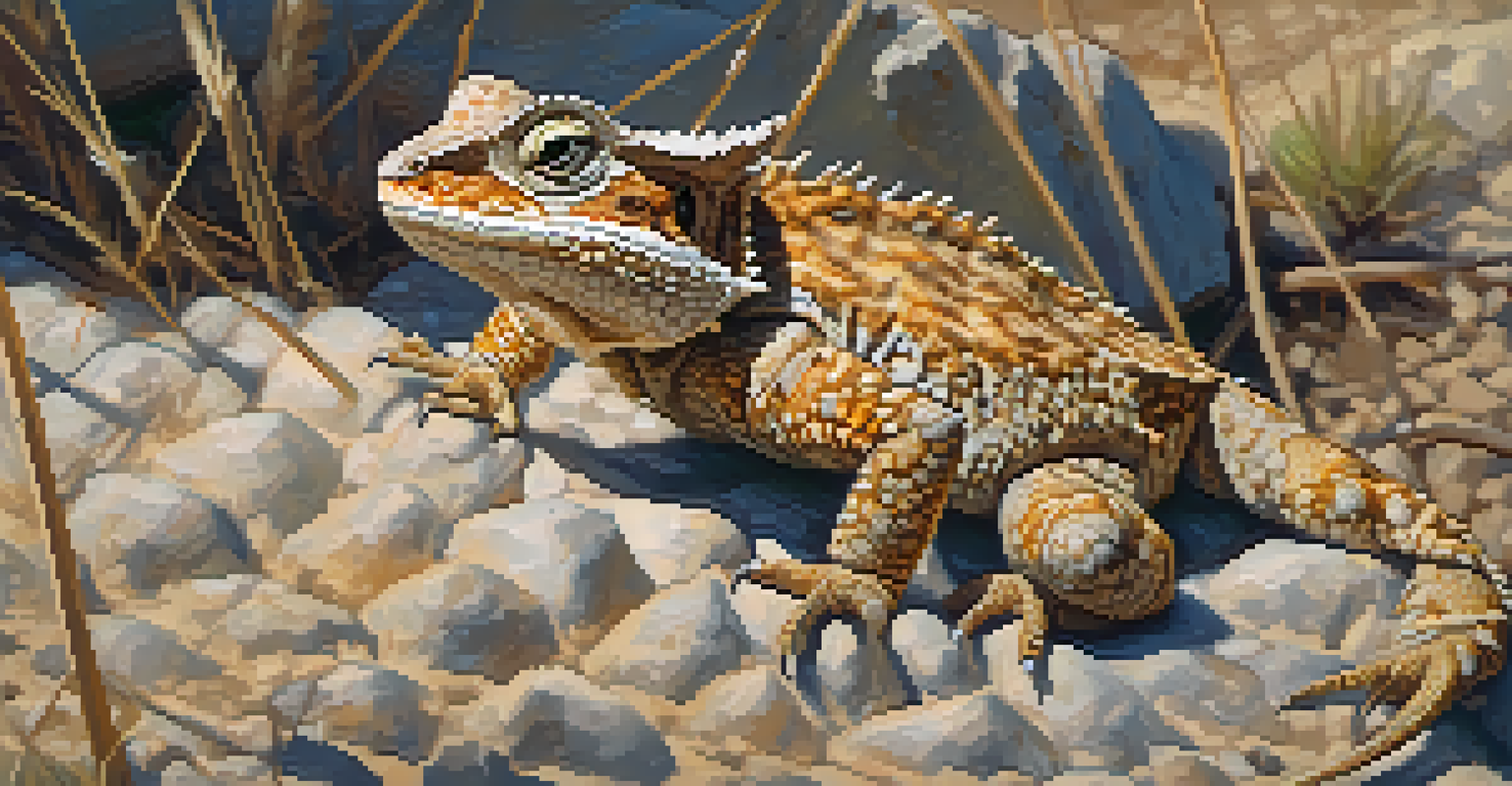Common Wildlife Species Found in Austin's Green Spaces

Introduction to Austin's Green Spaces and Wildlife
Austin, Texas, is renowned for its vibrant green spaces, from parks to nature reserves. These areas provide a sanctuary not only for residents but also for a plethora of wildlife species. Exploring these ecosystems can reveal the fascinating interactions between flora and fauna that define the region's biodiversity.
In every walk with nature one receives far more than he seeks.
As you wander through Austin's parks, you may encounter a variety of wildlife, from birds to mammals and reptiles. Each species plays a unique role in the ecosystem, contributing to the health and balance of the environment. This article will guide you through some of the most common wildlife species you might spot while enjoying the great outdoors in Austin.
Understanding these species enhances your appreciation for nature and encourages responsible wildlife observation. So, whether you’re a seasoned birdwatcher or a casual park-goer, let’s dive into the incredible creatures that call Austin’s green spaces home.
Birds: A Colorful Array of Species
Austin's parks serve as a haven for both migratory and resident birds. Species like the American Robin and Northern Cardinal are frequently spotted, bringing vibrant colors and cheerful songs to the landscape. Birdwatching has become a popular activity in these green spaces, with enthusiasts often armed with binoculars and field guides.

In addition to common birds, Austin is also a stopover for migratory species such as the Black-and-white Warbler and the Painted Bunting. Their seasonal visits add a dynamic layer to the birdwatching experience, as avid observers eagerly anticipate their arrival. The varied habitats within the parks—from wooded areas to open fields—provide perfect nesting and feeding grounds for these feathered friends.
Austin's Parks Host Diverse Wildlife
Austin's green spaces are home to a rich variety of wildlife, including birds, mammals, reptiles, and insects that contribute to the region's biodiversity.
So, the next time you’re in one of Austin’s green spaces, take a moment to look up. You might just see a flash of color or hear a beautiful melody, reminding you of the rich avian life thriving around you.
Mammals: Familiar Faces in Urban Parks
Mammals are another group of wildlife that can be found in Austin's green spaces. Common species include squirrels, raccoons, and coyotes, each contributing to the urban ecosystem. Squirrels are particularly entertaining to watch as they scurry around, foraging for food and playfully chasing one another.
The clearest way into the Universe is through a forest wilderness.
Raccoons, with their distinctive masks and clever paws, often visit parks in search of snacks, especially near picnic areas. While they may seem cute, it’s important to remember they are wild animals and should be observed from a distance. Coyotes, meanwhile, can often be heard howling at night, reminding us of the natural history that still thrives amidst the urban setting.
Observing these mammals can be a delightful experience, but it’s essential to respect their space and habitat. Understanding their behaviors and roles in the ecosystem fosters a deeper connection to the wildlife around us.
Reptiles: The Silent Residents
Reptiles, though less visible than birds and mammals, play a crucial role in Austin's green spaces. Species like the Texas Horned Lizard and various types of snakes can be spotted if you look closely. These creatures often help maintain the balance of insect populations, making them vital to the ecosystem.
The Texas Horned Lizard, for example, is a fascinating species that blends seamlessly into its surroundings. Often mistaken for a rock, these lizards rely on camouflage to evade predators. Meanwhile, snakes like the Rat Snake are essential for controlling rodent populations, showcasing how each species contributes to the broader ecological framework.
Conservation is Key for Wildlife
Protecting Austin's wildlife and their habitats is essential as urban development poses threats, making community involvement in conservation efforts crucial.
If you're lucky enough to encounter these reptiles, take a moment to appreciate their unique adaptations. They may not capture the spotlight like some mammals or birds, but they are equally important to the rich tapestry of life in Austin’s parks.
Insects: The Tiny Yet Mighty Pollinators
Insects, while often overlooked, are some of the most essential inhabitants of Austin’s green spaces. From butterflies to bees, these creatures play a critical role in pollination, which is vital for plant reproduction. Observing them flitting about can be a delightful experience, especially in flower-filled parks.
Butterflies, such as the Monarch and the Swallowtail, are not only beautiful but also symbolize the health of the ecosystem. Their presence indicates a thriving environment, rich in diverse plants. Bees, on the other hand, work tirelessly to pollinate flowers, making them indispensable for food production both in nature and agriculture.
So, the next time you visit a park, pay attention to the small wonders buzzing and fluttering around. These tiny creatures might not be the most glamorous, but they are crucial to the ecological balance and the beauty of Austin’s green spaces.
Aquatic Life: Hidden Gems in Water Bodies
Austin’s parks often feature ponds and streams, which are home to a variety of aquatic life. Species like turtles and frogs can frequently be seen basking on rocks or leaping into the water. These creatures are not only fascinating to watch but also serve important ecological functions within their habitats.
Turtles, particularly the Red-eared Slider, are a common sight, sunning themselves on logs or basking in the sun. Frogs, with their unique calls, add a symphony of sounds to the park atmosphere, especially during the warmer months. Their presence indicates a healthy water ecosystem, as they rely on clean water for breeding and survival.
Explore Nature for Deeper Appreciation
Engaging with Austin's natural environments allows visitors to gain a greater understanding of ecosystem dynamics and the importance of wildlife.
Taking time to observe these aquatic species offers a different perspective on wildlife in Austin’s green spaces. The interactions between land and water ecosystems create a rich tapestry of life that is worth exploring.
Conservation: Protecting Austin's Wildlife
Understanding and appreciating the wildlife in Austin's green spaces is crucial for their conservation. Urban development can threaten these habitats, making it essential for residents and visitors to advocate for wildlife protection. Conservation efforts help preserve not only the animals but also the natural beauty that Austin is known for.
Local organizations and community groups often work tirelessly to protect these habitats through clean-up events, educational programs, and habitat restoration projects. Supporting these initiatives can make a significant impact on preserving the delicate balance of life in these parks. Additionally, simple actions like avoiding littering and respecting wildlife can go a long way in safeguarding these green spaces.

By participating in conservation efforts, you contribute to the health of the ecosystem and ensure that future generations can enjoy the rich wildlife that Austin has to offer. Every small action counts, and together, we can make a difference.
Conclusion: Embracing Austin's Natural Heritage
Austin's green spaces are teeming with life, offering a glimpse into the diverse wildlife that thrives in urban settings. From birds and mammals to reptiles and insects, each species contributes to the vibrant tapestry of nature. By exploring these parks, you not only enjoy the beauty of the outdoors but also gain a deeper understanding of the intricate relationships within ecosystems.
As you venture through these areas, remember the importance of conservation and the role we all play in protecting wildlife. Every visit is an opportunity to learn, appreciate, and advocate for the creatures that share our environment. Engaging with nature in this way fosters a sense of community and responsibility toward the environment.
So, whether you’re taking a leisurely stroll or actively observing wildlife, embrace the natural heritage that Austin has to offer. Let it inspire you to support conservation efforts and cherish the unique wildlife that makes this city truly special.